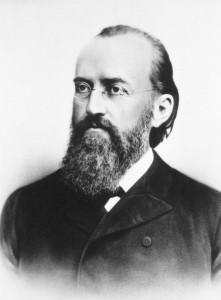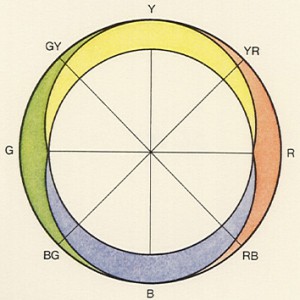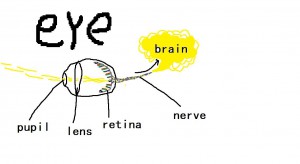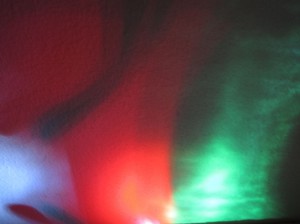Some time ago I heart about color theories. My focus was mostly on the color theory of Ewald Hering. He was a psychologist. As a psychologist, he was busy with the perception of color by people. He made a theory based on another theory. The theory of Helmholtz and Young. Young and Helmholtz said that there are three primary colors (red, green and blue) these are the basis for every color. But Ewald Hering made his own improved version of this theory of Young and Helmholtz.
Ewalds color theory is about how color is perceived in the eye. The perception of color is (re)made in the brain. In the eye there is a layer which is sensitive for color, it is called the retina.
You have little cones in this layer of your eye. Every cone has its own function in relation to color. Each cone is sensitive to two colors. The cone has two colors that are opponents of each other. Red and green are together in a cone. As well as blue and yellow and as black and white. When a cone is being activated by for example red, green also reacts to that cone. In the cone there are nerves which pick up the signals of the colors and transport that to the brain.
The introduction of the color yellow into the theory was very important. Hering said yellow was a primary color. We see yellow as a primary color in painting but in light it was new to use yellow as a primary color in color theory. Like in the theory of Helmholtz and Young, there yellow was said to be a mix of green en red.
The color is what makes Herings theory innovative for the time. He changed from three primary colors to four primary colors.
With his fourth primary color, the way the colors responded to each other had to be different. He made a theory for that which deals with opponent colors. Because the sensation of green and red together cannot be seen together in one color. (Reddish-green doesn’t exist). But his theory claims that they do have to interact with each other.
I thought it was fascinating that someone could create a theory by thinking in a logical way. Because Ewald could not proof that Helmholtz and Young were wrong with their theory. He based his whole theory on the fact that he experienced that people could not see yellow as a mix of green and red.
What I then tried was combining red and green light through 3D glasses. I thought I saw yellow but when I looked again, I just saw black. That might also have been caused by the method of using filters. When you put a red filter and then nothing else red goes through, if you then put a green filter it will go black.
I find Herings way of making a color theory a beautiful way of finding new things.







